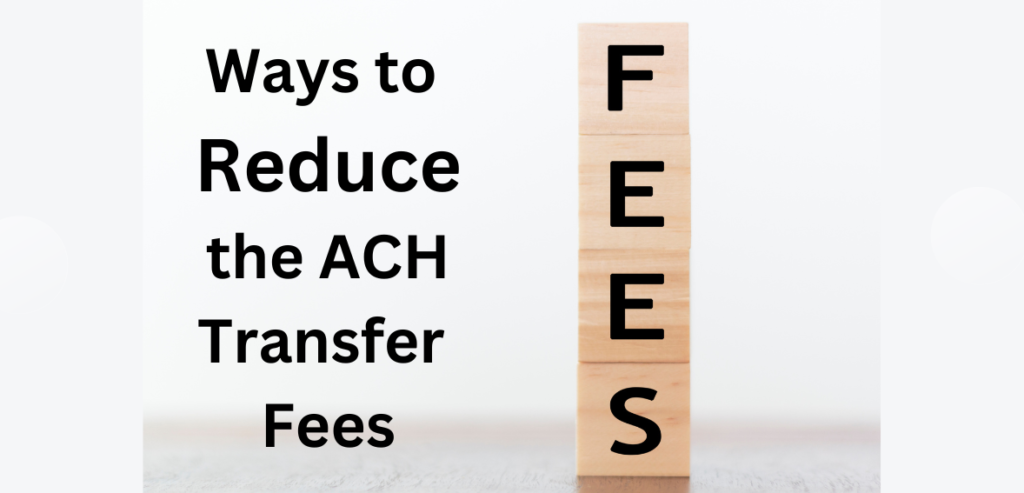If you have ever sent money through a wire transfer, you must know that these transactions do not come for free, and you may have to pay ACH payment fees. Depending on the type and size of your business, it may be necessary for you as a merchant to incorporate a wide range of payment methods to satisfy your customers’ needs. Businesses that operate globally and virtually may have to use mobile wallets and other digital payment methods to accept payments from international countries.
These services charge a high processing fee for every transaction. It may seem small at first, but it can add up quickly. If you are running a small business or a startup, you must be looking for ways to save money on your working capital and other regular expenses. One area where you can save money is the transaction costs. Adding the ACH payment fee to your accepted payment methods saves you money on transaction costs. That’s why more and more companies are now embracing ACH payments.
The most significant advantage of using the ACH transfer is that it can save you a lot of money on your bank fees. Besides, these transactions no longer take 2-5 business days to reach the recipient’s account. The method has become safer and more convenient for customers and merchants. Let’s understand the ACH payments and the processing fees in detail:
ACH Transactions Processing Fees
ACH stands for Automated Clearing House and is located in the United States. It includes the Federal Reserve, private banks, and ACH. Banks or credit unions commonly manage these bank-to-bank transactions. However, each transaction is automatically passed through the Federal Reserve and ACH.

Any company or individual can request the fund’s transfer from one account to another through the Automated Clearing House payments. But, as mentioned above, a small fee for the transaction is incurred as the payment has to go through a few essential steps before it arrives at the recipient’s bank account. Suppose a company has to make direct deposits to transfer employees’ salaries. They must gather the employee’s payroll details and send this payroll file to the bank. The direct deposits are made only after the ACH receives and sorts these payment forms.
Now, the total processing fee for an ACH transfer could vary depending on the size of the transaction, the total volume of transactions, whether the company needs the payment processed the same day, and the bank accounts involved. On average, one transaction can cost you up to $0.11. However, the fees can be between $0.20 and $1.50. The inflated cost also covers transferring the ACH funds, reversal fees, and other charges associated with the transfer.
Factors Affecting the ACH Payment Fees

You must wonder,” If the average processing fee per transaction for ACH payments is claimed to be $0.11, then why does it deduct the $1.50”? Fair Question! As mentioned earlier, several factors are essential in determining a merchant’s total fees on ACH transactions. Let’s check them out:
- The size of your transaction (total amount transferred)
- Number of transactions
- The banks involved in the transaction
- Whether you’d like the same-day transfer
- Batch transfer fee
- Monthly fee
- Return or refund fee
- Hidden charges
It may seem daunting at first, but there is no doubt that ACH fees are relatively cheaper than those of credit cards and other transfer modes. Note that businesses that involve a large volume of transactions pay a lower cost. It could also be accessible for some users, i.e., depending on the total number of transactions they have requested and the banks they send the money to. In addition to the ACH processing fee, your banks may charge a nominal fee for sending money to another financial institution. It can be between $3 and $30, but not every bank charges a fee for such money transfers.
The scheduled fee is another charge you might incur on ACH payments. However, it is only for companies that make direct deposits. For example, a company has to pay a scheduled fee to send payments to their employees through direct deposits. The bank charges a fee depending on the number of transactions the employer executes monthly and the size of each transaction. It does not cost the employee anything, however.
Are There Any Ways to Reduce the ACH Transfer Fees?

One way to reduce your ACH transfer fee is to send the payments in batches. This is highly recommended for those who execute many transactions every month. Besides, you must understand the return and reversal fees if the customer requests a return. Always check with your financial institution before making ACH transfers.
If you think your bank is charging too much for ACH and there is no way you can save money on these transactions, you can consider switching to the API. This API can be integrated into your eCommerce website. Not only does it streamline payment processing, but it is an excellent way to reduce your cost per transaction. It’s a software app that can process multiple ACH transactions efficiently.
The TPPP and banks are supposed to comply with the government’s regulations when processing ACH transactions. Merchants and customers must use only FDIC-accredited banks. That being said, not all ACH transfers are processed through banks only. However, the company must comply with the KYC regulations if the transfer occurs outside the FDIC-accredited bank.
Bottom Line
Payments cleared and processed through the Automated Clearing House do come with specific fees, but it is a lot less than the fees you may incur from the wire transfer. So, what are you waiting for? Start receiving ACH payments through ACH API and save money on your transaction fees.

